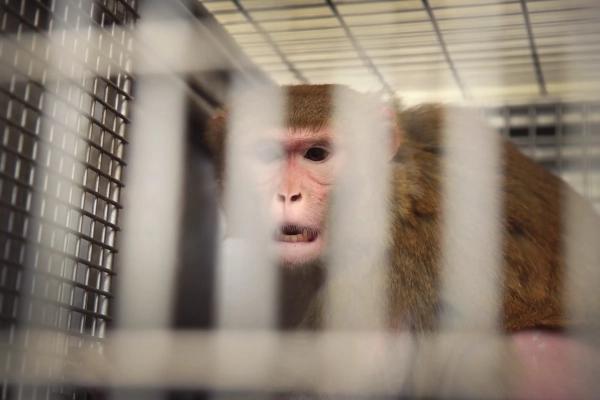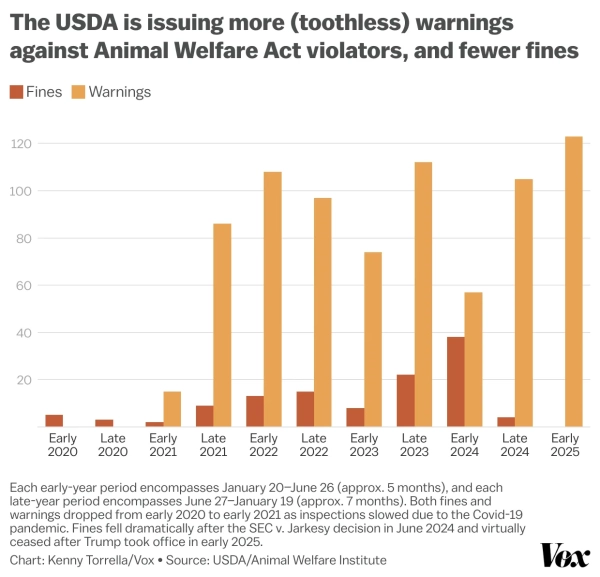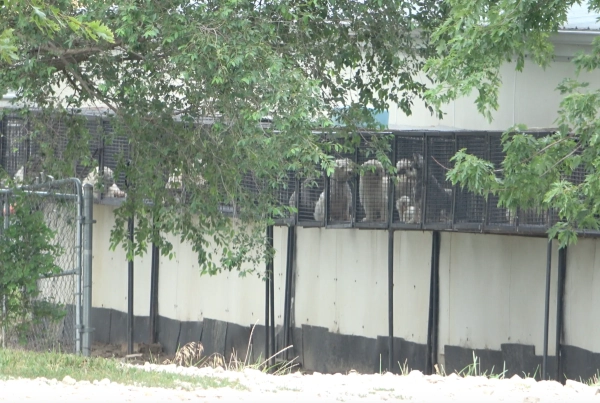
Should a person unlawfully park their car in a restricted zone on a one-way street and a police officer passes by, it is generally assumed they would be issued a ticket. Likewise, one would imagine that should an enterprise that utilizes animals be discovered mistreating them, they would similarly undergo some kind of lawful consequence. However, for many organizations in the United States, this is not the reality.
This past summer, an examiner from the US Department of Agriculture paid a visit to a dog rearer in Ohio and detected that one of the canines — a 4 1/2-year-old female Maltipoo — was not in good health. Several of its teeth were gone, its gums were receding, and when the examiner gently touched some of the remaining teeth, they shifted. The rearer received a warning, which carries no material ramifications.
This occurred, too, when, three years earlier, a USDA inspector who went to Alpha Genesis — a business that breeds and runs experiments on primates — found out that two of the business’s animals had perished after sections of their extremities (digits on their hands and feet) got wedged in an element inside their enclosure. Another primate died when it was mistakenly housed in the incorrect enclosure and was attacked by another animal.
These scenarios show harsh animal neglect and improper management — and supposed breaches of the Animal Welfare Act. Based on a recent, exclusive evaluation by the nonprofit Animal Welfare Institute (AWI), they constitute a broader trend across the past five years of the USDA progressively issuing advisories over concrete enforcement actions, like penalties.
“USDA is perpetually seeking avenues to better regulatory obedience and holds the belief that regulatory correspondence, such as an Official Warning, may be a helpful instrument in promoting compliance and preventing future noncompliance,” a USDA representative stated in an email to Vox.

Established in 1966, the Animal Welfare Act prescribes basic standards, like sustenance, potable water, living space, and medical attention for over one million animals utilized by some 17,500 establishments, which are subject to yearly USDA inspections guaranteeing observance of the law.
The problem resides in the fact that the act is riddled with loopholes. It leaves out those animals suffering the most extensive maltreatment: those cultivated for flesh, dairy, and eggs, which at present amount to over 10 billion per year. The legislation does encompass animals in laboratory testing, yet does not include murine rodents, Norwegian rats, Pisces, and Aves — species that constitute the vast majority of creatures in studies.
This story was first featured in the Future Perfect newsletter.
Sign up on this page to examine the major, complex dilemmas the planet is facing and the most effective means of tackling them. Delivered twice per week.
That is to say, the bill encompasses under 0.01 percent of animals harnessed by US enterprises.
The animals that are covered can be, and oftentimes are, subjected to terrible treatment, such as in puppy production facilities, where dogs are regarded as breeding engines rather than companions; in zoological gardens, where the psychological condition of numerous undomesticated creatures is intensely impaired by captivity; and in scientific laboratories, where animals are used in agonizing tests.
It follows logically that should an enterprise be found to be in infraction — mainly on multiple occasions — it would be handed a sizable penalty or something more serious, like a license revocation, impounding of animals, or illegal charges. However, as AWI’s recent analysis has laid bare, the USDA’s implementation has merely become weaker in the recent past.
What’s the reason?
Weak enforcement of a weak law
A segment of the issue is that the USDA has an inadequate workforce; over the previous years, the agency has shed a third of its inspectors whilst the amount of establishments it has to assess has increased two-fold.
Even so, the heart of the matter is that it typically excuses transgressors easily: The department has been long taken to task by both advocates for animals and the US Office of Inspector General (OIG) — a government regulatory agency — for extremely poor implementation of the Animal Welfare Act.
Going back to the start of the 1990s, the OIG has recorded the USDA regularly neglecting to make recurring offenders accountable, along with considerably lessening penalties (in the early 2000s, penalties were reduced by 86 percent on average). The resulting fines are so insignificant — thousands of dollars rather than tens of thousands; or tens of thousands of dollars rather than hundreds of thousands — that numerous transgressors see them “as a common operating expense, instead of something that prevents violation of the law,” as per an OIG report.
Nevertheless, as per AWI’s analysis, the Supreme Court and the Trump administration are somewhat to blame for implementation getting worse in recent times.

Source: vox.com






